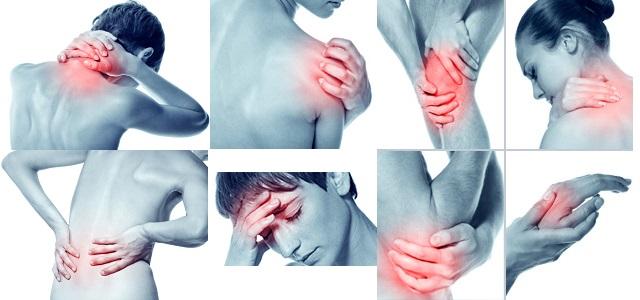Severe pain is more than a physical experience; it profoundly affects the mind and emotional well-being. The intersection of pain and psychology reveals critical insights into how individuals perceive, cope with, and manage pain. Understanding these psychological aspects is essential for comprehensive pain management and improving patients’ quality of life.
The Nature of Severe Pain
Severe pain can be described as an intense, often debilitating experience that disrupts normal functioning. It can stem from various conditions such as chronic illnesses, acute injuries, or surgical procedures. The International Association for the Study of Pain defines pain as an unpleasant sensory and emotional experience associated with actual or potential tissue damage. This definition highlights the dual nature of pain—both physical and psychological.
The Brain-Pain Connection
Pain is not merely a sensation but a complex interaction involving sensory pathways and brain regions responsible for emotion and cognition. When the body experiences pain, signals are sent through the nervous system to the brain, where they are processed and interpreted. This process involves the limbic system, which regulates emotions, and the prefrontal cortex, which handles cognitive functions.
Emotional Responses to Severe Pain
Severe pain often triggers a range of emotional responses, including anxiety, depression, and frustration. These emotions can amplify the perception of pain, creating a vicious cycle that exacerbates the overall experience. For instance, anxiety can heighten pain sensitivity, while depression can lead to a diminished ability to cope with pain, resulting in increased suffering.
Cognitive Aspects of Pain Perception
The way individuals think about pain can significantly influence their pain experience. Cognitive factors such as attention, beliefs, and expectations play crucial roles in how pain is perceived and managed. For example, focusing intensely on pain can make it seem more severe, while distraction can reduce pain perception. Additionally, negative beliefs about pain, such as catastrophizing (expecting the worst), can lead to increased pain intensity and poorer outcomes.
Coping Mechanisms and Pain Management
Effective pain management requires addressing both the physical and psychological aspects of pain. Coping mechanisms are strategies that individuals use to deal with pain and its emotional consequences. These can include:
- Relaxation Techniques: Practices such as deep breathing, progressive muscle relaxation, and guided imagery can help reduce stress and alleviate pain.
- Cognitive-Behavioral Therapy (CBT): This form of therapy helps individuals reframe negative thoughts about pain and develop healthier coping strategies.
- Mindfulness and Meditation: Mindfulness practices encourage a non-judgmental awareness of the present moment, which can help individuals manage pain more effectively by reducing the emotional impact of pain.
- Support Groups and Counseling: Talking to others who understand the experience of severe pain can provide emotional support and practical advice for coping.
The Role of Stress in Pain
Stress is a significant factor that can influence the experience of pain. Chronic stress can lead to changes in the nervous system that heighten pain sensitivity and contribute to the development of chronic pain conditions. Stress management techniques, such as regular exercise, adequate sleep, and healthy social interactions, are vital components of comprehensive pain management.
The Impact of Pain on Daily Life
Severe pain can disrupt various aspects of daily life, including work, social interactions, and personal relationships. It can lead to a decrease in physical activity, which in turn can cause deconditioning and further pain. Moreover, the emotional toll of living with chronic pain can result in social isolation, reduced productivity, and a diminished quality of life.
Psychological Interventions in Pain Treatment
Incorporating psychological interventions into pain treatment plans can significantly enhance outcomes. Some effective psychological interventions include:
- Biofeedback: This technique teaches individuals to control physiological processes such as heart rate and muscle tension, which can help manage pain.
- Acceptance and Commitment Therapy (ACT): ACT encourages individuals to accept pain as a part of life and commit to actions aligned with their values, despite the pain.
- Pain Education Programs: Educating patients about the nature of pain and its psychological aspects can empower them to take an active role in managing their condition.
Chronic Pain and Mental Health
Chronic pain is often associated with mental health disorders such as anxiety and depression. The relationship between chronic pain and mental health is bidirectional; pain can lead to mental health issues, and mental health issues can exacerbate pain. Integrated treatment approaches that address both pain and mental health can improve overall outcomes.
Future Directions in Pain Research
Ongoing research continues to explore the psychological aspects of severe pain, aiming to develop more effective treatments. Advances in neuroimaging and neurofeedback, for example, hold promise for better understanding the brain’s role in pain and developing targeted interventions. Additionally, personalized pain management strategies that consider individual psychological profiles may enhance treatment efficacy.
Conclusion
Understanding the psychological aspects of severe pain is crucial for effective pain management. By addressing the emotional and cognitive dimensions of pain, healthcare providers can offer more comprehensive care that improves patients’ quality of life. Integrating psychological interventions with traditional medical treatments can help break the cycle of pain and suffering, providing hope and relief for those affected by severe pain.
